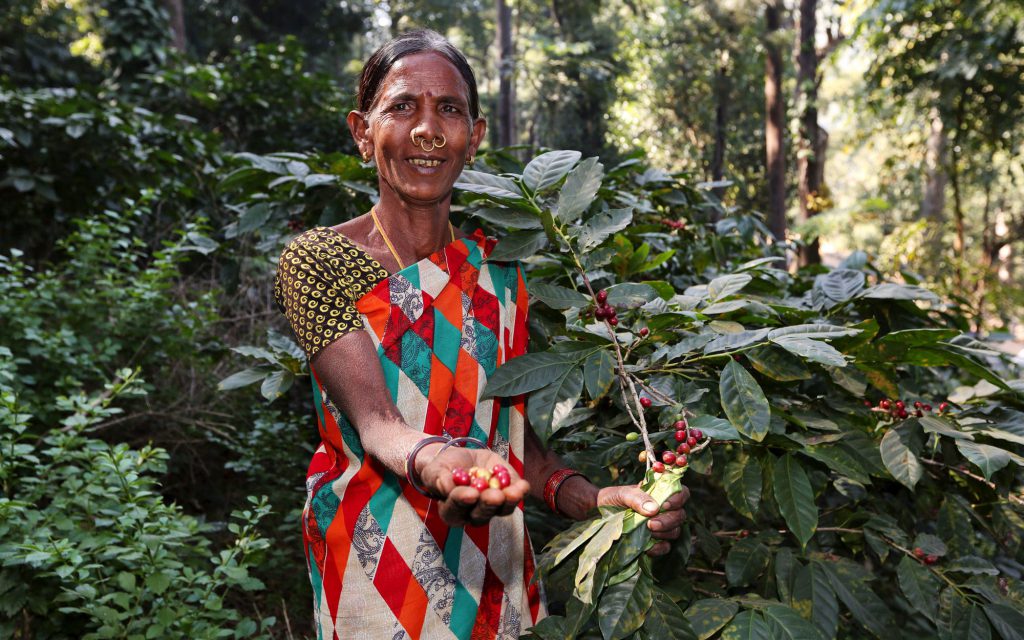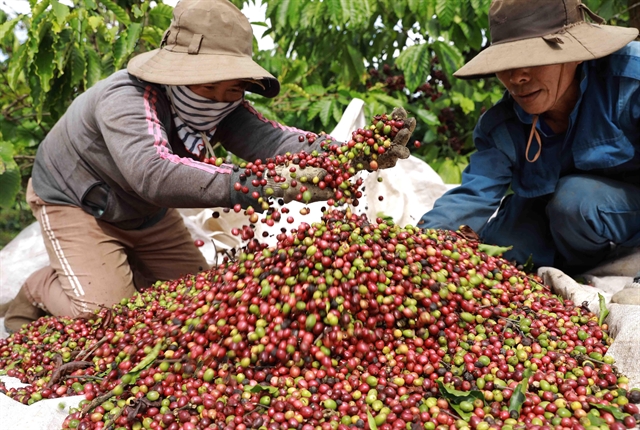Asia & Oceania
Asia & Oceania
Asia and Oceania are home to some of the most distinctive and diverse coffee origins in the world, combining tropical highlands, traditional farming practices, and cutting-edge processing techniques. From the humid forested landscapes of Indonesia and the mountainous regions of Vietnam and India, to the volcanic soils of Papua New Guinea and the emerging microlots of Thailand and China, the region reflects the complexity of terroir in every cup.
The countries of this vast area produce both Arabica and Robusta, with Indonesia and Vietnam ranking among the world's leading exporters. Innovation plays a central role here — from experimental processing methods like anaerobic fermentation and yeast-controlled techniques, to the unique wet-hulled process and the preservation of varieties that reflect highly specific ecosystems.
At the same time, new origins such as Laos, Myanmar, and Nepal are gaining visibility, enriching the global specialty coffee scene with fresh profiles, stories, and opportunities.

India
Global Production Rank: #6–7
Average Annual Production: ~5,700,000 bags (60 kg each)
Cultivated Area: ~420,000 hectares
Processing Methods: Washed, Natural, Monsooned, Anaerobic (especially for specialty)
Robusta Share: ~70% | Arabica: ~30%
Grading System
India classifies coffee based on:
- Processing method (e.g., Plantation for Arabica, Cherry/Parchment for Robusta)
- Screen size and cup quality (Grades A, AA, PB, AB, C)
- Monsooned Arabica/Robusta: Distinct category due to unique processing

Main Varieties
S795, SLN9, Cauvery (Catimor), Kent, Selection 5B, Chandragiri, Robusta Peridinia
Key Producing Regions
Karnataka ,Kerala ,Tamil Nadu ,Andhra Pradesh & Odisha
Harvest
- Arabica: October – January
- Robusta: November – March
- Method: Hand-picked, selective harvesting for specialty lots
Unique Characteristics
- Monsooned coffee: Beans are exposed to monsoon humidity to develop earthy, low-acidity profiles
- Grown under shade, often intercropped with pepper, cardamom, and fruit trees
- Distinct regional profiles influenced by altitude and microclimates
Vietnam

Global Production Rank: #2
Average Annual Production: ~27,500,000 bags (60 kg each)
Cultivated Area: ~630,000 hectares
Processing Methods: Primarily Natural (Robusta); also Washed for Arabica, with increasing use of Honey and experimental methods
Robusta Share: ~95% | Arabica: ~5%
Grading System
Vietnam classifies coffee based on:
- Species: Robusta, Arabica, Excelsa, Liberica
- Screen size (e.g., 18, 16, 13)
- Processing method & moisture content, especially relevant for Robusta exports
Main Varieties
Robusta (Canephora), Catimor, Typica, Bourbon, Arabica SE, Trung Nguyen hybrid varieties
Key Producing Regions
Central Highlands ,Lam Dong (Da Lat) ,Son La & Dien Bien (North)
Harvest
- Robusta: November – March
- Arabica: October – January
- Method: Primarily mechanical or shaking nets; selective hand-picking increasing in specialty farms
Unique Characteristics
- Second-largest coffee-producing country globally, with a strong focus on Robusta
- Major exporter of soluble and instant coffee, but growing interest in specialty segments
- Strong government support and investment in quality through cooperatives and private sector
Indonesia
Global Production Rank: #4–5
Average Annual Production: ~11,500,000 bags (60 kg each)
Cultivated Area: ~1,200,000 hectares
Processing Methods: Primarily Wet-Hulled (for both Arabica & Robusta); also Washed, Natural, and Anaerobic for specialty lots
Robusta Share: ~75% | Arabica: ~25%
Grading System
Grading in Indonesia is generally based on:
- Species (Arabica, Robusta)
- Processing method
- Screen size
- Region of origin

There is no universally applied national quality system; the market is shaped by private grading standards and cup scores.
Main Varieties
Typica, Catimor, S795, Linie S, USDA, Timor Hybrid, Ateng Super, Kartika
Key Producing Regions
Sumatra ,Java ,Sulawesi ,Bali ,Flores
Harvest
- Sumatra: October – March
- Java & Bali: June – September
- Sulawesi & Flores: May – October
- Method: Hand-picking, sorted at wet mills
Unique Characteristics
- Wet-hulling processing (locally known as giling basah) gives Indonesian coffee its distinct earthy, dense character
- High percentage of coffee is shade-grown and cultivated using agroforestry systems
- Strong specialty presence, particularly from Gayo, Bali, and Toraja microlots
- Significant social impact: tens of thousands of smallholder farmers, many working in cooperatives
Papua New Guinea

Global Production Rank: #17–20
Average Annual Production: ~800,000 bags (60 kg each)
Cultivated Area: ~85,000 hectares
Processing Methods: Primarily Washed; also increasing use of Natural, Honey, and Anaerobic methods
Arabica Share: ~95% | Robusta: ~5%
Grading System
Papua New Guinea classifies coffee based on:
- Grades: AA, A, X, PSC, etc. — determined by bean size, density, and cup score
- Origin type: Estate, Plantation, Smallholder, and Cooperative lots
Main Varieties
Typica (Jamaica Blue Mountain lineage), Bourbon, Arusha, Mundo Novo, Catimor
Key Producing Regions
Eastern Highlands ,Western Highlands ,Simbu (Chimbu) ,Morobe & Jiwaka
Harvest
- Season: April – September (peak: June – August)
- Method: Hand-picked with an emphasis on selective harvesting
Unique Characteristics
- Over 85% of production comes from smallholder farmers (farms under 2 hectares)
- Native shade trees promote biodiversity and contribute to cup quality
- Nearly all Arabica is grown at high elevations (SHG)
- Increasing presence in specialty markets, with traceable, single-origin microlots
